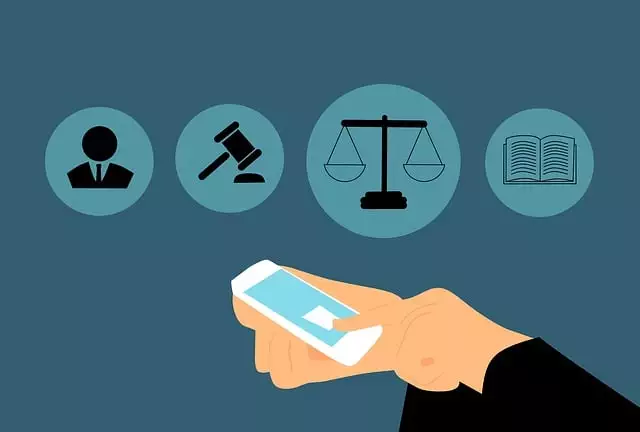Category: defending mail fraud charges
Defending Mail Fraud Charges: Navigating the Complexities of Cybersecurity
Introduction
In an era dominated by digital communication and e-commerce, mail fraud has evolved into a sophisticated and pervasive global challenge. “Defending mail fraud charges” is not merely a legal concept but a critical component of safeguarding personal and organizational integrity in the digital realm. This comprehensive article aims to guide readers through the intricate world of mail fraud defense, exploring its various facets, implications, and future directions. By delving into this topic, we can better understand the complexities of online security and empower individuals and businesses to protect themselves effectively.
Understanding Defending Mail Fraud Charges
Definition:
Defending mail fraud charges refers to the process and strategies employed to combat and prevent fraudulent activities that utilize postal or electronic mail systems. It encompasses legal, technical, and procedural measures designed to identify, investigate, and deter individuals or organizations engaged in mail fraud.
Core Components:
- Fraud Detection: Implementing advanced technologies and algorithms to identify suspicious patterns or anomalies in mail traffic.
- Investigation: Conducting thorough inquiries to gather evidence of fraudulent activities, often involving law enforcement agencies.
- Legal Proceedings: Navigating the legal system to prosecute offenders, seeking justice and deterrence.
- Prevention and Education: Creating awareness campaigns and providing training to educate the public about mail fraud risks.
- Security Measures: Enhancing physical and digital security protocols to safeguard postal systems and data.
Historical Context:
Mail fraud has been a concern since the advent of postal services, with early instances involving counterfeiting and altering mail content. However, the digital age has transformed mail fraud into a more sophisticated and complex crime. The rise of e-mail, online banking, and electronic document transfer has provided new avenues for fraudulent activities, necessitating enhanced defense mechanisms.
Significance:
- Financial Loss Prevention: Effective mail fraud defense protects individuals and businesses from significant financial losses caused by identity theft, scams, and fraudulent transactions.
- Maintaining Trust: It safeguards the public’s trust in postal services and digital communication platforms, fostering a secure online environment.
- Legal Compliance: Defending against mail fraud is essential for organizations to adhere to legal obligations and regulatory frameworks related to data protection and consumer rights.
Global Impact and Trends
International Influence:
Mail fraud knows no borders, making it a global concern. Countries worldwide have implemented measures to combat this crime, sharing intelligence and best practices through international collaborations like INTERPOL. The World Bank estimates that fraud and corruption cost the global economy an astonishing $2.56 trillion annually, with mail fraud contributing significantly to these losses.
Regional Variations:
- North America: Strict data privacy laws, such as the CAN-SPAM Act in the US, have led to advanced spam filtering technologies and robust legal frameworks for mail fraud defense.
- Europe: The European Union’s General Data Protection Regulation (GDPR) imposes stringent requirements on organizations handling personal data, making it harder for fraudsters to operate.
- Asia Pacific: Rapid digital transformation in this region has increased the risk of mail fraud, prompting governments and businesses to invest heavily in cybersecurity measures.
- Emerging Markets: Countries like Brazil and India are witnessing a surge in cybercrimes, including mail fraud, due to growing internet penetration and technological advancements.
Key Trends Shaping the Trajectory:
- Phishing Attacks: The use of deceptive emails to trick recipients into revealing sensitive information is on the rise, with sophisticated phishing campaigns targeting specific individuals or organizations.
- Spam and Malware: Unwanted bulk emails often carry malicious links or attachments, leading to data breaches and system infections.
- Identity Theft: Fraudsters steal personal information from mail or online sources to impersonate individuals and conduct fraudulent transactions.
- Advanced Persistent Threats (APTs): Targeted cyberattacks designed to remain undetected for extended periods, often involving sophisticated hacking techniques.
Economic Considerations
Market Dynamics:
Mail fraud has significant economic implications, affecting various sectors:
- Financial Services: Banks and financial institutions bear the brunt of mail fraud, with losses stemming from check fraud, credit card skimming, and identity theft.
- E-commerce: Online retailers face challenges due to fraudulent orders, return scams, and fake product reviews.
- Telecommunications: Telecom companies suffer from sim swapping fraud, where criminals gain unauthorized access to accounts by impersonating customers.
Investment Patterns:
To combat mail fraud, businesses invest in:
- Cybersecurity Solutions: Implementing firewalls, intrusion detection systems, and encryption technologies to protect data and networks.
- Employee Training: Educating staff about phishing, social engineering, and safe handling of sensitive information.
- Legal Compliance: Ensuring adherence to data protection regulations and investing in legal resources for fraud defense.
Role in Economic Systems:
Effective mail fraud defense is vital for maintaining economic stability:
- Preventing Financial Loss: Safeguarding businesses and consumers from financial setbacks due to fraudulent activities.
- Promoting Digital Trust: Encouraging digital transactions and online business by fostering an environment of trust and security.
- Reducing Regulatory Burden: Compliance with data protection laws can be costly, and robust fraud prevention measures can simplify regulatory requirements over time.
Technical Aspects of Mail Fraud Defense
Fraud Detection Technologies:
- Machine Learning (ML): ML algorithms analyze vast mail traffic patterns to identify anomalies and potential fraudulent activities.
- Natural Language Processing (NLP): NLP techniques are used to detect suspicious language or content in emails, helping identify phishing attempts.
- Behavioral Analytics: Monitoring user behavior patterns to uncover deviations that may indicate fraudulent interactions.
Security Measures:
- Email Authentication Protocols: Implementing SPF, DKIM, and DMARC enhances email sender authentication, preventing spoofing.
- Secure Mail Server Configurations: Strengthening mail server security through firewalls, encryption, and access controls.
- Two-Factor Authentication (2FA): Adding an extra layer of security for user accounts to prevent unauthorized access.
Countering APTs:
- Threat Intelligence Sharing: Collaborating with cybersecurity organizations to share threat intelligence, allowing for proactive defense against known cyber threats.
- Endpoint Security: Deploying security solutions on individual devices to detect and mitigate advanced persistent threats.
- Incident Response Planning: Developing comprehensive plans to respond to security incidents, minimizing damage and recovery time.
Legal and Regulatory Frameworks
Prosecuting Mail Fraud:
- Criminal Charges: Mail fraud can lead to criminal charges, with penalties including fines and imprisonment, varying by jurisdiction.
- Civil Lawsuits: Victims of mail fraud can seek legal redress through civil lawsuits, aiming for monetary compensation and injunctive relief.
- Regulatory Fines: Non-compliance with data protection laws often results in substantial regulatory fines, as enforced by bodies like the FTC in the US or GDPR enforcement bodies in Europe.
International Cooperation:
- Extradition Treaties: Countries have agreements to facilitate the extradition of individuals accused of cross-border mail fraud.
- Information Sharing: Law enforcement agencies collaborate through international organizations to combat cybercrime, including mail fraud.
- Mutual Legal Assistance: Countries assist each other in gathering evidence and conducting investigations related to mail fraud.
Prevention and Education Strategies
Public Awareness Campaigns:
- Educating the Public: Creating informative materials and workshops to raise awareness about mail fraud risks, phishing scams, and safe online practices.
- Targeted Outreach: Engaging specific communities, such as senior citizens or small businesses, which may be more vulnerable to certain types of mail fraud.
Training and Simulation:
- Phishing Simulation: Conducting simulated phishing campaigns to train employees and assess their susceptibility to fraudulent emails.
- Security Awareness Training: Regularly updating staff on emerging threats, security best practices, and incident response procedures.
Best Practices for Businesses:
- Implement Multi-Factor Authentication (MFA): Adding an extra layer of security for employee accounts and customer data.
- Regular Security Audits: Conducting periodic reviews to identify vulnerabilities and ensure compliance with security protocols.
- Incident Response Planning: Developing a comprehensive strategy to handle security incidents, including data breach response plans.
Future Directions and Innovations
Emerging Technologies:
- Blockchain: This distributed ledger technology can enhance transaction transparency and security, potentially reducing mail fraud in financial transactions.
- Artificial Intelligence (AI): AI-powered analytics can revolutionize fraud detection by learning from vast datasets and adapting to new fraud patterns.
- Quantum Computing: While still emerging, quantum computing may impact encryption and secure communication, requiring new approaches to data protection.
Predictive Analytics:
Using predictive models to anticipate potential fraud risks based on historical data and behavior patterns can help proactive defense strategies.
Collaboration and Research:
- Public-Private Partnerships: Collaborating between government agencies, law enforcement, and the private sector to share insights and develop more effective fraud prevention measures.
- Academic Research: Encouraging research in cybersecurity to explore new technologies and methodologies for mail fraud defense.
Conclusion
Defending against mail fraud is a complex, ever-evolving field that requires a multi-faceted approach. By combining advanced technologies, robust legal frameworks, and public education, it is possible to significantly reduce the impact of mail fraud on individuals, businesses, and the global economy. As technology advances and cyber threats become more sophisticated, continuous innovation and collaboration will be essential in staying ahead of mail fraud perpetrators.
Save Time & Money: Master Wire Fraud Defense Tactics Today!
Save Thousands: Expert Strategies for Defending Mail Fraud Charges in Healthcare

Navigating healthcare fraud accusations can drain your resources and tarnish your reputation. Our sp…….
Save Your Reputation & Wealth: Expert Mail Fraud Defense Strategies
Protect Your Future: Expert Legal Defense Against Mail Fraud
Stop Mail Fraud, Save Assets: Free Guide to Proven Defense Strategies

Are you tired of living in fear of wire fraud? Imagine the peace of mind that comes with knowing you…….
Protect Your Reputation & Assets: Free Consultation for Mail Fraud Defense

Facing mail fraud charges can be a nightmare, threatening your freedom and reputation. But with our…….
Free Consultation: Denver’s Top Mail Fraud Defense – Save & Keep Peace of Mind

Facing mail fraud charges can be a financial and reputational nightmare. Our Denver-based legal expe…….
Avoid Mail Fraud Conviction: Unbeatable Expertise, Free Consultation.

Facing mail fraud charges can be a costly and stressful ordeal, but with our Expert Defense Against…….
Save Time & Money: Unmatched Expertise in Defending Mail Fraud Charges

Facing healthcare fraud charges can drain your resources and damage your reputation. Our specialized…….



